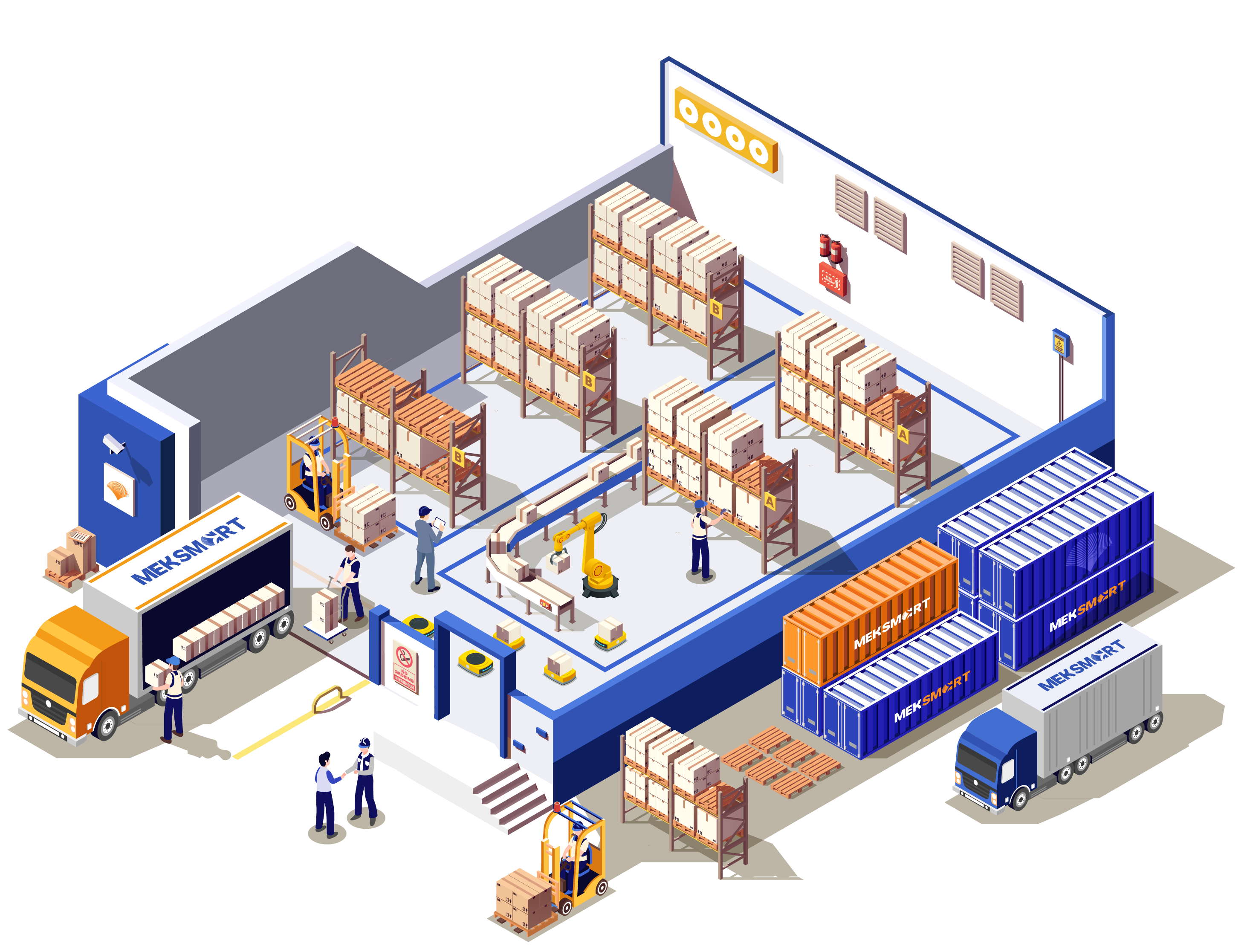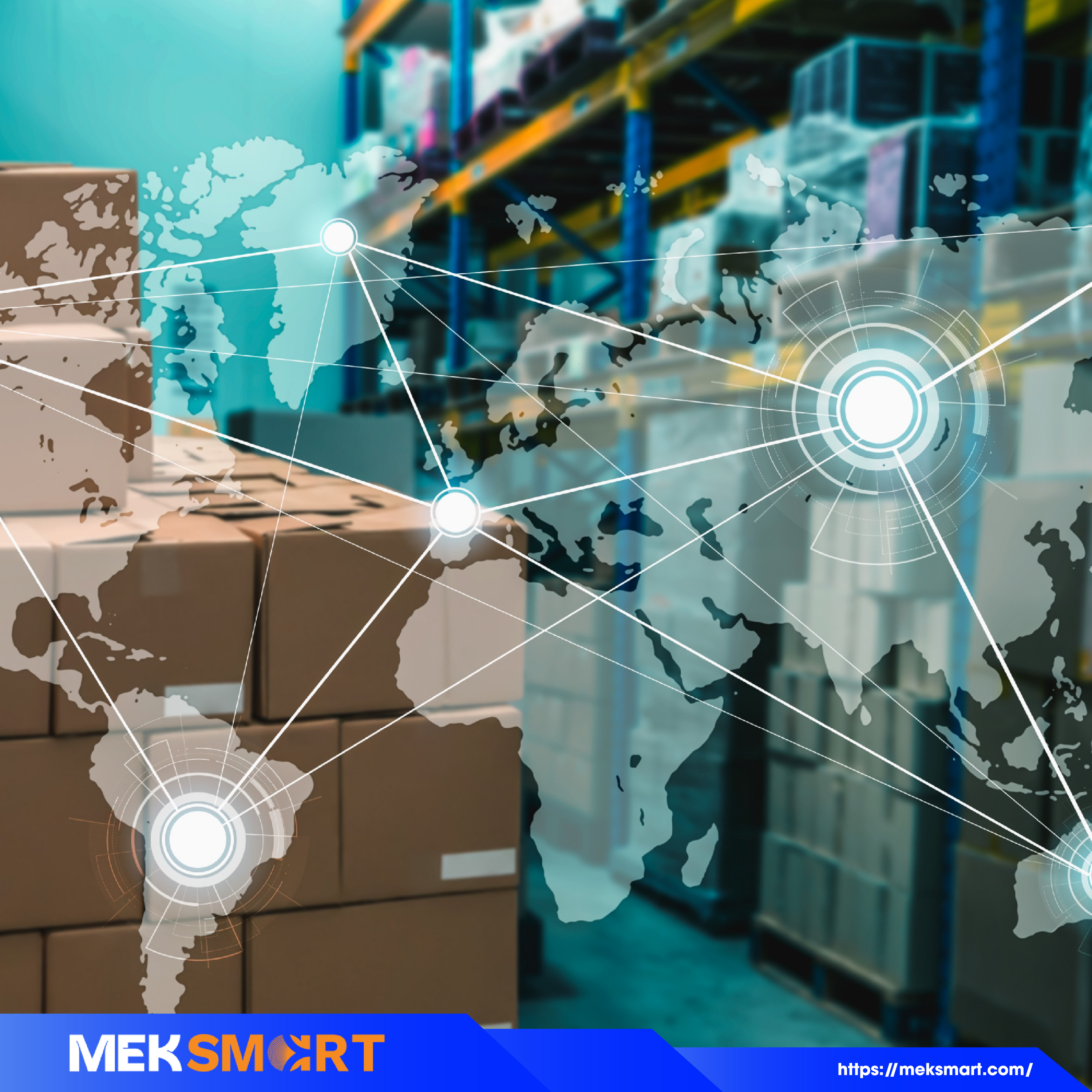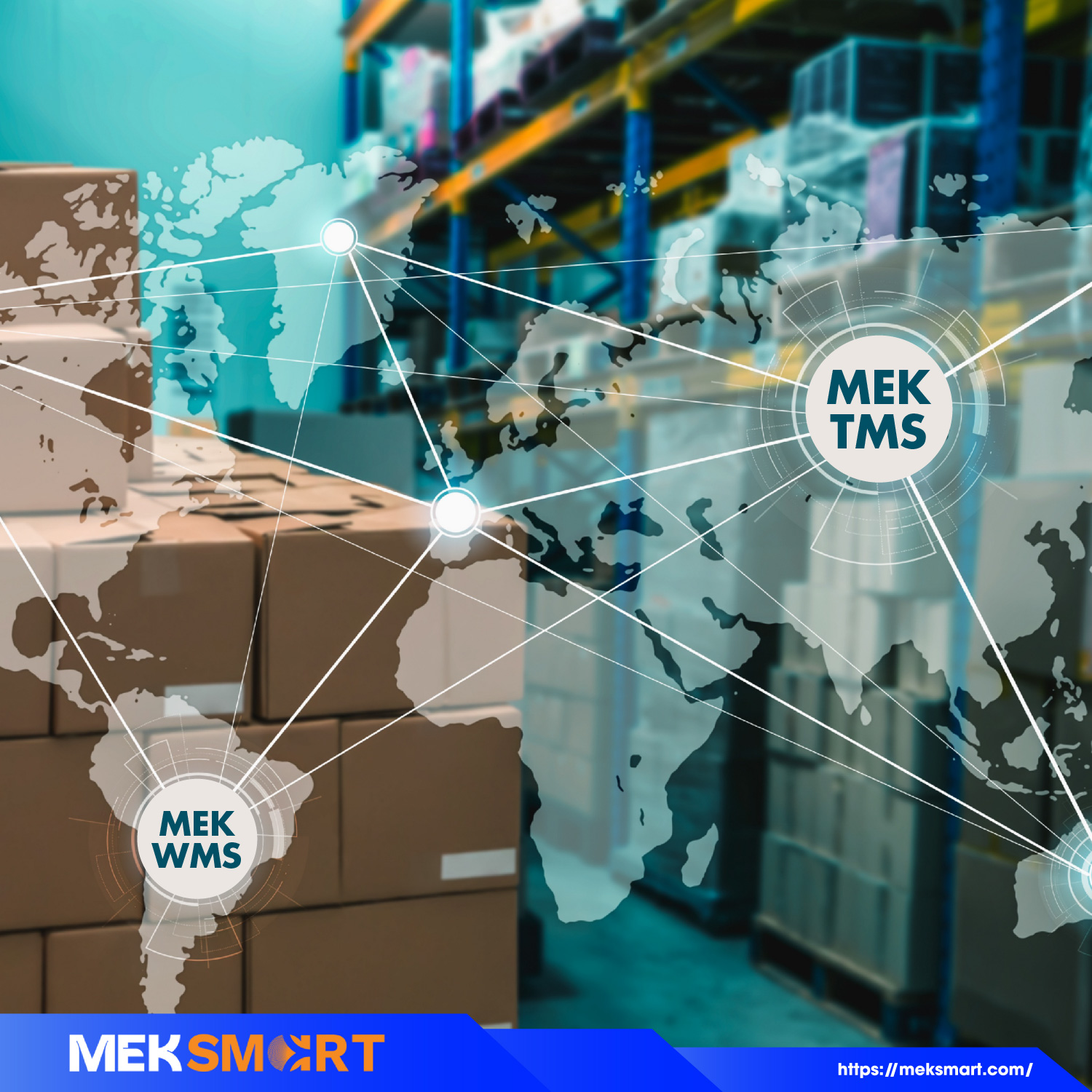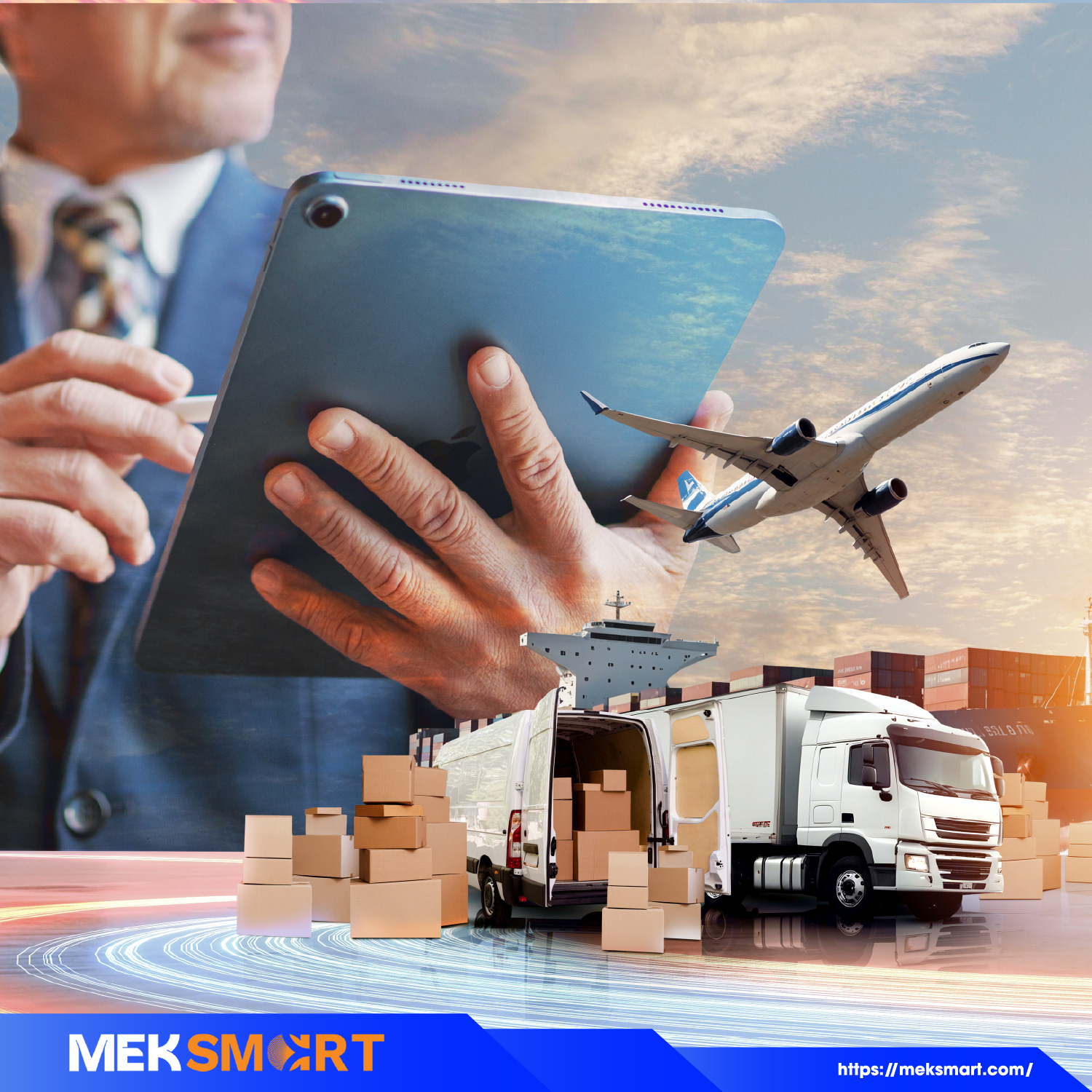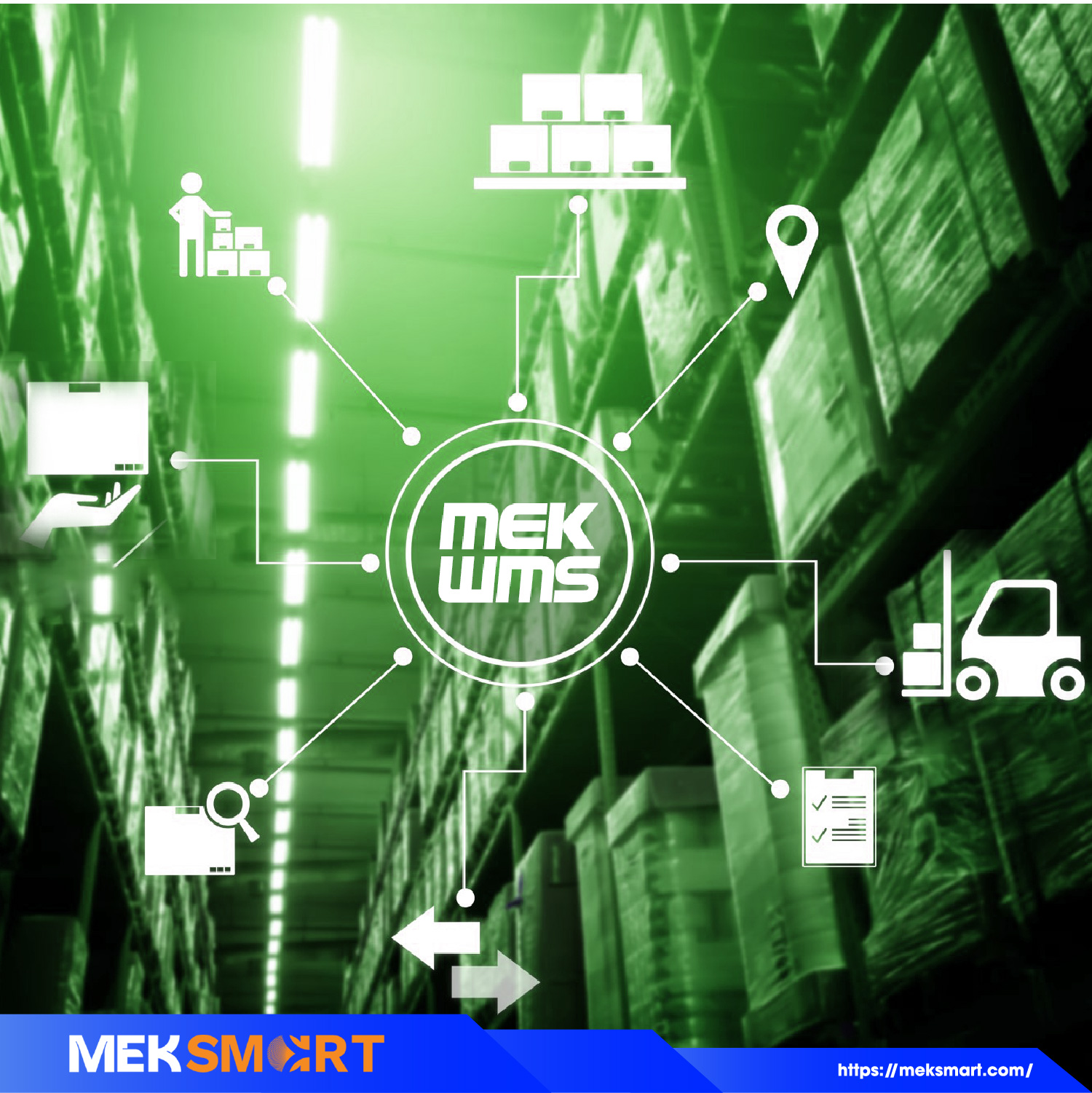MEKSMART
GENERAL NEWS
Author:
Update: 12/08/2024
BLOCKCHAIN FOR DIGITAL LOGISTICS AND WAREHOUSE
I. Blockchain in Supply Chain
- Manufacturers spend a fair amount of money on inventory management (managing the flow of goods in and out) and warehousing (receiving, storing, and distributing goods).
- In many times, controlling logistics costs is seen as a challenge. In a time of global disruption, costs are almost unmanageable. COVID-19 alone has caused massive shortages of consumer products and increased shipping costs.
- In the warehousing sector, a combination of pandemic demand and big stores racing to compete with Amazon has sent warehouse space costs skyrocketing. Companies also face continued increases in warehouse costs due to rising construction costs, as well as increased investment in complex warehouse robots to automate warehousing.
- Due to the increasing costs involved in managing the flow of inventory, tools to reduce logistics and warehousing costs, such as Blockchain technology, are more attractive than ever.
II. Basics of Blockchain for Logistics and Warehousing
- Blockchain is a distributed ledger that allows to store immutable data, shared by members of the Blockchain network. A manufacturer can use Blockchain to record and view transactions at every step of the supply chain. The distributed ledger format provides companies with a single, unchanging truth of reference for logistics and warehouse planning, management, and dispute resolution.
Companies also benefit from the secure nature of Blockchain. Due to the immutable and decentralized structure of the Blockchain, it will be difficult for hackers to target the encrypted information stored on the Blockchain.
III. Benefits of Blockchain for Logistics
- Today's logistics network is complex and inefficient due to lack of visibility and outdated documentation system. Blockchain will help overcome these problems.
1. Lack of visibility
- Due to the complexity of logistics networks, companies often have blind spots in their supply chains, making it difficult to locate products at any given time. Because of this lack of visibility, companies often face the challenge of identifying performance flaws. Unavailable real-time tracking further hinders companies from trying to schedule deliveries and make efficient use of company assets.
Blockchain fights inefficiencies by allowing companies to track products in real time and store relevant data on a tamper-proof ledger. Blockchain stores information on a shared ledger that is viewable by all authorized parties, so companies can ease administrative processes as well.
2. Paper-based system
- Because logistics networks often revolve around paperwork, each company that comes in contact with a product must manually keep records of that product, resulting in redundant or potentially inconsistent records. Moreover, bad guys can easily forge documents. Finally, employees in the supply chain may be slower to distribute and process paper documents compared to digital documents. In today's logistics supply chain, product containers can be stuck at ports while officials wait for a paper bill of lading (which acts as a contract of carriage, confirmation of product receipt and legal documentation). ) arrive.
- By transferring data and processes to the Blockchain, companies gain access to a system containing trusted data that is resistant to cyber attacks and fraudulent manipulation. Blockchain also allows companies to use smart contracts to automate payments and sign documents, which can save time compared to traditional manual processes.
- For bills of lading, Blockchain provides the necessary technology to eliminate paper bills of lading in the past and use secure electronic bills of lading (eB/Ls). However, a bill of lading can cross multiple countries and change hands through multiple participants (traders, buyers, carriers, etc.). The inherent complexity in coordinating the manual-to-digital changeover process for a large number of participants has hindered the widespread adoption of eB/Ls. One challenge is that not everyone wants to participate in Blockchain. Another challenge is that many jurisdictions have not definitively addressed the legal status of electronically transferable records. To pave the way for the digitization of the centuries-old bill of lading format, the United Nations Commission on International Trade Law published a model law to govern the use of electronically transferable records (such as bills of lading and bills of exchange).
IV. Benefits of Blockchain for Warehousing
- As demand for warehousing increases, the challenges of inventory tracking and management become more apparent than ever. Blockchain alleviates the challenges of tracking and managing inventory.
1. Go beyond inventory management
- Companies often operate warehouses on a flexible basis, which means that companies only order more when stock is low, or predictive models (which can take time to fill) forecast demand. add item.
Blockchain allows companies to track exactly what products are in stock at a given time. It also allows manufacturers to view end-user demand in real-time, allowing for better management of production planning as well as rapid inventory allocation and replenishment. Warehouses can still rely on minimum volumes or predictive models, but Blockchain will optimize for more accurate and timely decisions.
2. Minimize manual processes
- Companies largely operate warehouses using manual processes, including location tracking, picking, and inventory tracking. As companies continue to eliminate manual processes with the advent of warehouse automation advancements (such as inventory counting drones and robots assisting workers with picking) , smart warehouses can further enhance automation by implementing Blockchain. Blockchain increases the efficiency of stocking, replenishing, picking and packing due to the digitization of record keeping and the use of smart contracts.
3. Smart contract solution
- Blockchain technology enables the execution of “smart contracts,” which are computer programs that automatically perform an action according to a predefined set of rules. This feature can simplify transactions between employees in the supply chain and provide an audit trail for those transactions. Employees in the supply chain can get paid faster and reduce administrative costs. Logistics and logistics companies can use smart contracts to:
+ Automatically record the time of delivery and receipt of goods into the warehouse.
+ Automatic payment for inventory received.
+ Notify stakeholders if the product held in stock is nearing the end of its shelf life or if the price of the product held in stock has reached the actual price.
Work with IoT devices to trigger alerts if warehouse or shipping container conditions change, such as temperature and humidity.
+ Automatic payment of credits if Service Level Agreement (SLA) and Key Performance Indicators (KPIs) are not met.
+ Automatically record the product transfer process between members of the supply chain from the factory to the consumer.
+ Make commercial transactions automated by connecting importers, exporters and their respective banks to Blockchain to reduce duplicate paperwork and quality assurance processes redundant.
V. Blockchain Design for Logistics and Warehousing
- Blockchain can uniquely solve the challenges faced by companies in supply chain logistics and warehousing operations by providing streamlined distribution processes and improved inventory management. warehouse. However, the complexity of the supply chain and the reluctance to invest in blockchain infrastructure can pose barriers to blockchain adoption in logistics and warehousing.
- As a result, leading companies, such as UPS, Penske and Salesforce, have formed the Blockchain Alliance in Transportation (BiTA), the largest commercial Blockchain alliance in the world. BiTA has more than 500 members in 25 countries, including 3PL/4PL, logistics company, air freight company, railway company, trucking company, Blockchain consulting service, SaaS technology company and original equipment manufacturer. BiTA aims to drive forward adoption of Blockchain technology and develop frameworks and standards for market participants to effectively build Blockchain applications.
- In another effort to digitize the logistics industry, Maersk and IBM have developed the TradeLens platform, designed using Blockchain technology to create greater cooperation and trust in the global shipping industry. IBM and Maersk built the TradeLens platform using Hyperledger Fabric and IBM cloud12 Blockchain technology to digitally connect shippers, freight forwarders, ports and terminals, customs brokers and members another important part of the global supply chain ecosystem.
- However, there is no standard Blockchain solution for logistics and warehousing, so companies should assess whether Blockchain is a cost-effective solution for a leaner and more efficient supply chain. or not.
Source: The National Law Review
See more articles: THE MOUNTAIN MAKES MANY BLOCKCHAIN VIETNAM PROJECTS DIFFICULT TO DEVELOP
